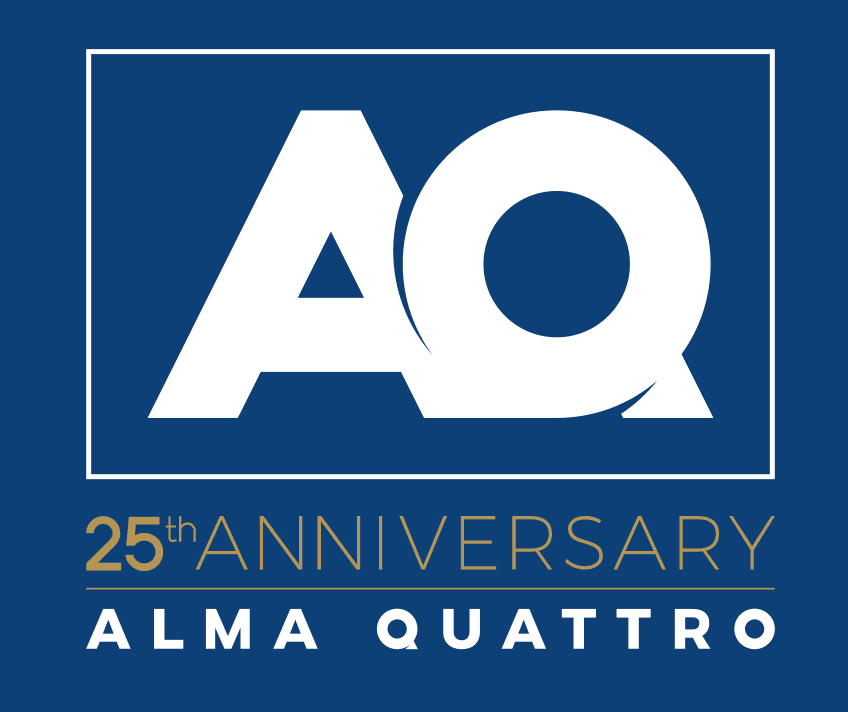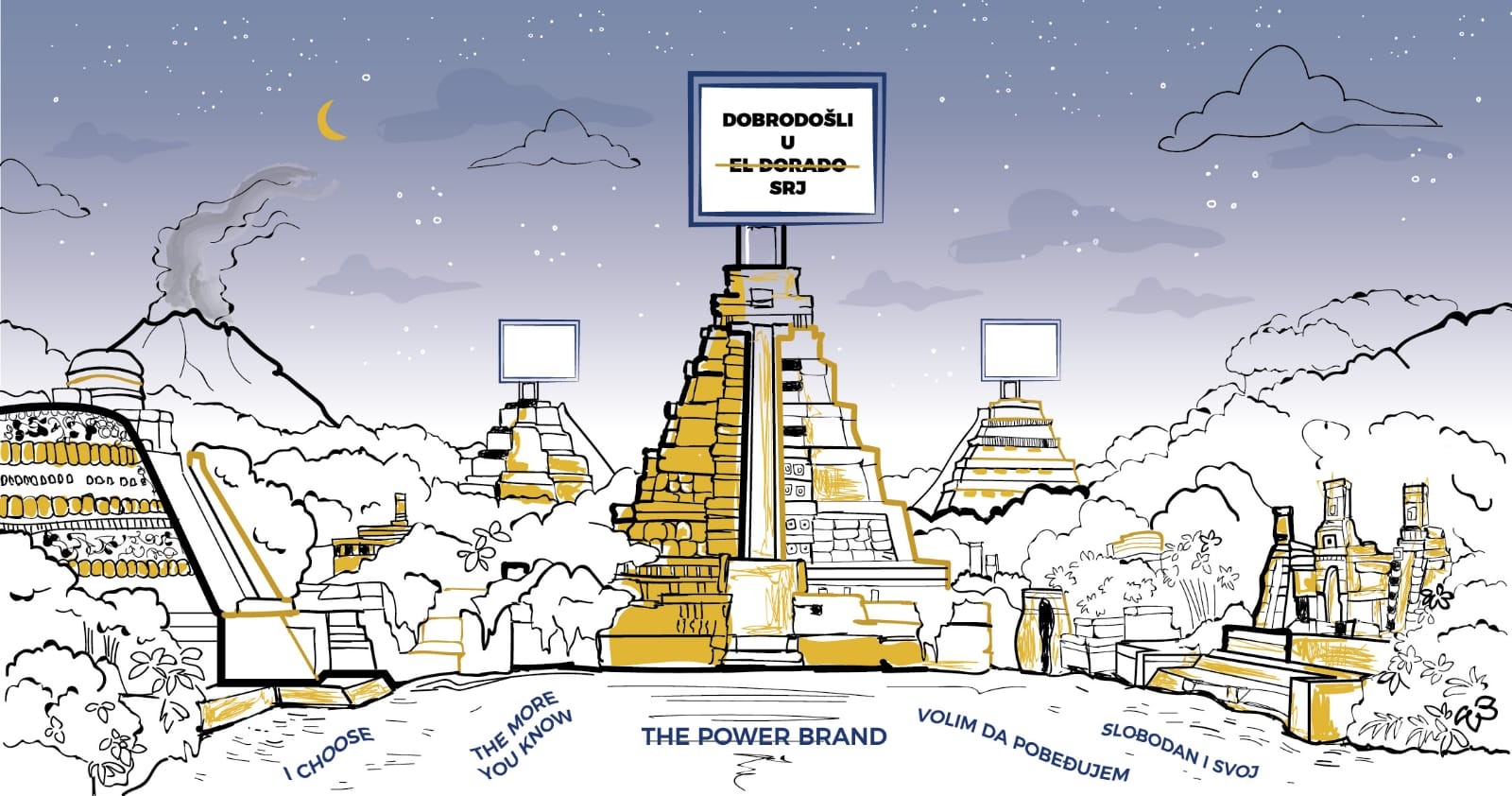
Copyright: Illustration by Iva Kujundžić
WELCOME TO EL DORADO: OOH IN THE 1990s
ALMA QUATTRO ARCHIVES
SERIAL: OOH DEVELOPMENT IN SERBIA - PART 7
Created: Sep 11, 2019
Press clippings and Alma Quattro’s photo archive cover the turbulent period that began in 1994, the period in which outdoor advertising in this country experienced rapid expansion and development. Through a prism of photographs, information from employees, and press clippings, we shall reconstruct a review of the development of advertisements and the medium itself, along with changes on the market, regulations, and other conditions that have directed the development of this advertising medium.
“The golden age of OOH in Serbia” – this is how we call the period of the 1990s which ended when the first Advertising Law entered into force in 2005. During this period , which lasted about one decade, the Republic of Yugoslavia (later the Republic of Serbia) was a kind of El Dorado, as a result of the complete lack of regulations in the advertising industry. It means that the first clients that rushed to rent billboards were “vice businesses”, such as tobacco and alcoholic beverage industries, which made the initial momentum to this type of advertising.
Budgets of those clients were … unprecedented. They spent enormous amounts on OOH. Money was pouring in from them. All major routes, all streets and parts of the city were covered with posters of different tobacco companies, who waged their small internal war in order to take over a certain percentage of the market share from their competitors. From advertising posters all their paths lead directly to the point of sale, which was also branded in order to ensure advertising exposure of every buyer until the moment of purchase.
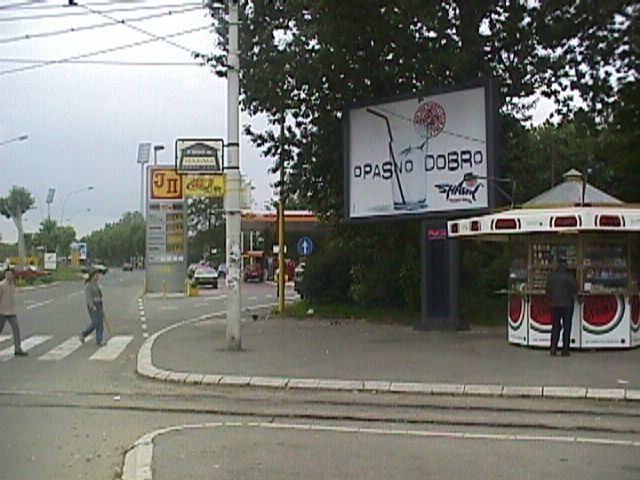
Alma Quattro’s archive photo
I remember one of our accounts in a marketing agency who worked for two brand competitors from tobacco industry. On every joint meeting with clients he would take a pack of cigarette of the brand made by the company we were talking to. We knew who the client was the moment he put his pack on a desk or table. I would like to remind you that smoking indoors was still allowed then. I asked him whether he had ever mixed up the brands. He claimed that he was a professional and that such thing could not happen to him. It was the time when we had to take care of our clients’ vanity, even in such details.
Bojana Novaković, AQ Chief Sales Officer
“THE MORE YOU KNOW”
A scanned clip from Alma Quattro’s press clipping
At the time when the most powerful and expensive car on the streets of Belgrade (if driven by a mere mortal) was Mercedes-Benz W123 and when other cars of the Belgrade “fleet” that were leaving exhaust smoke behind were usually Lada, Yugo Koral, Zastava, Fiat 126, Trabant, and occasionally Renault, the biggest campaign on OOH media was for Davidoff, placed on 74 backlit billboards with the famous motto “The more you know”. Without translation or superfluous explanation, the campaign was “doing its job”.
The majority of people did not even notice that for every new wave of campaigns new posters with different models were printed. The same type of guy, the same background, and only stereotypical faces were different.
Bojana Novaković, AQ Chief Sales Officer
WHERE ARE MY DOLPHINS?
The campaign in which the citizens’ ingenuity became particularly evident was the campaign for Rovinj Tobacco Factory in 2003. Namely, they rented classical backlit billboards and citylights on bus stop shelters, and the agency sent to Alma Quattro two ad designs: one with horses and one with dolphins.

Alma Quattro’s archive photo
No one was sure what dolphins, horses and cigarettes had in common, but we never challenged the creativity of agencies. The campaign was placed on billboards on time, but only a couple of days later we witnessed the spontaneous disappearance of posters with dolphins.
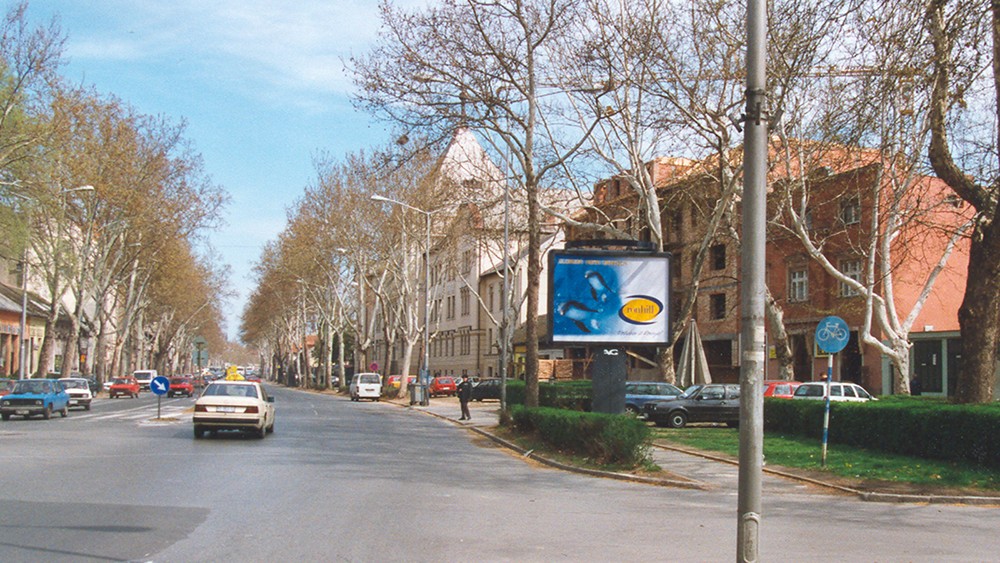
Alma Quattro’s archive photo
Anyway, our fellow citizens like the dolphin ads so much that they stole the posters from citylights on a regular basis. No one touched the ones with horses. We have never found out why. They say there is a similarity between the brains of dolphins and humans and, perhaps, that’s why citizens felt they could take posters for themselves.
Bojana Novaković, AQ’s Chief Sales Officer
PROVEN FORMULA FOR OOH
Tobacco industry and alcoholic beverage industry paid great attention to the brand power development through recognisable logos (with a motto that “the logo must dominate”), effective and short slogans, and reduced designs. Their solutions were not loaded with unnecessary elements.

Alma Quattro’s archive photo
There was no message such as “buy, buy, buy”.
A picture spoke more than a thousand words and it clearly reminded you what the brand was representing and who you could be if you specifically bought their product, often without any depiction of the product itself.
Fun fact: In contrast to intensive advertising of alcoholic beverages, in 2002 there was campaign against speeding under the motto“NE! Brže od života” (Not faster than life), in which Vlado Georgijev and Niggor were involved. A panel next to a billboard.

Alma Quattro’s archive photo
Tobacco companies were wizards in subtle profiling of consumers according to the desired personal image. It is interesting that despite women as models on posters, these companies mainly “targeted” archetypical men’s characteristics, such as competitiveness, speed, etc. Some advertisements became differentiated and at first sight (and reading) they revealed how the target groups differed.
With this brand you arethe American original.
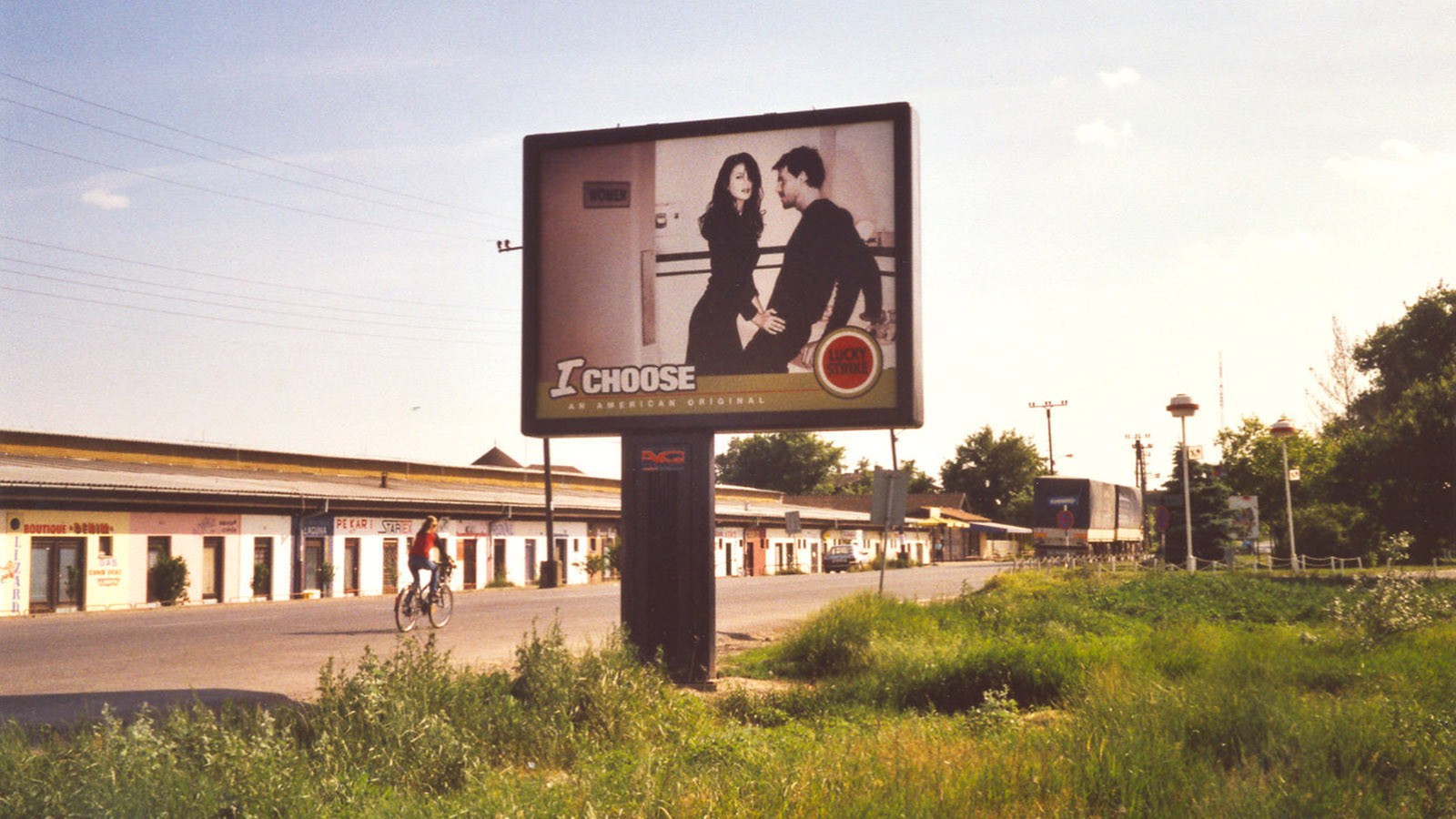
Alma Quattro’s archive photo
You will be attracted by the other brand, if you are a winner and enjoy being a winner.
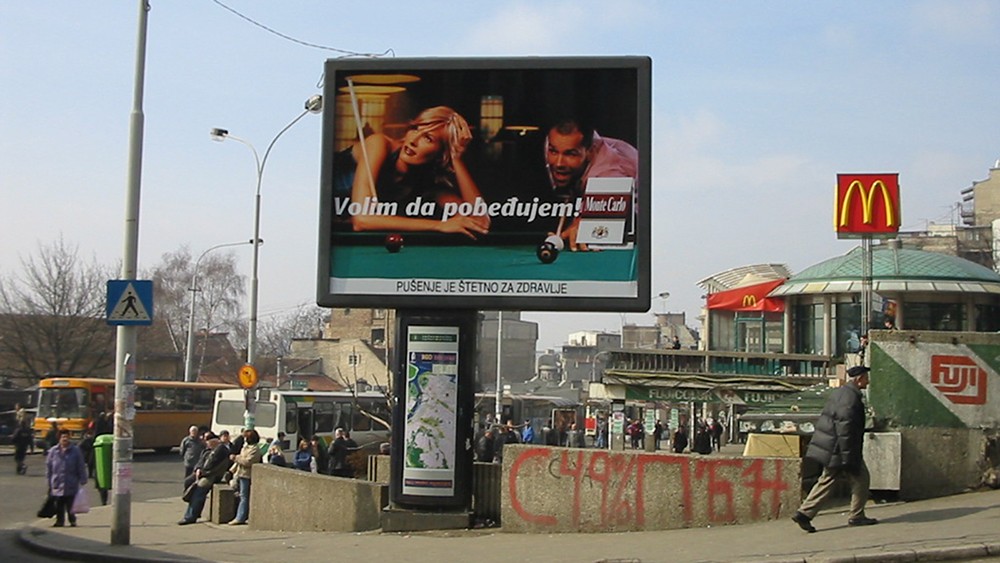
Alma Quattro’s archive photo
The third brand uses several personalised messages and tries to say that if you know the quality, your selection will be obvious. Of course, it’s up to you.

Alma Quattro’s archive photo
The fourth brand is for those who like power and speed.

Alma Quattro’s archive photo
The fifth brand is for those who see themselves as free and authentic, with a picture of the sky, without limits. The message certainly evoked a longing and desire in the country going trough transition.
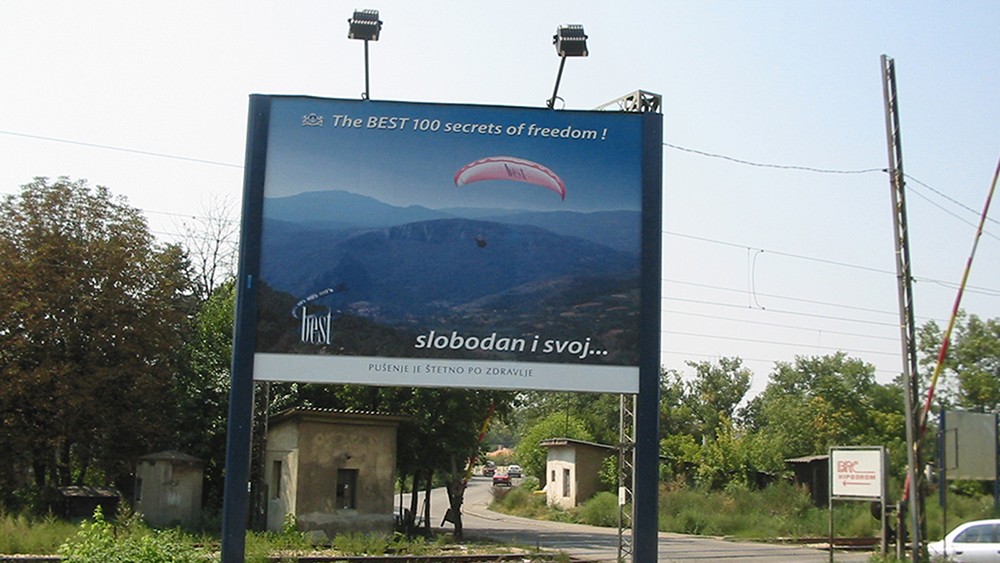
Alma Quattro’s archive photo
BANISHED FROM HEAVEN
On 16th September 2005 the National Assembly adopted the Draft Law on Advertising, which entered into force on 24th December 2005.
To the tobacco and alcoholic beverage industries it meant that the game was over.
The tobacco industry was left with an opportunity to be a sponsor of events and manifestations, but without logo displays point-of-sale advertising. The alcoholic beverage industry experienced similar advertising ban, with an exception of beer, which was classified as food.
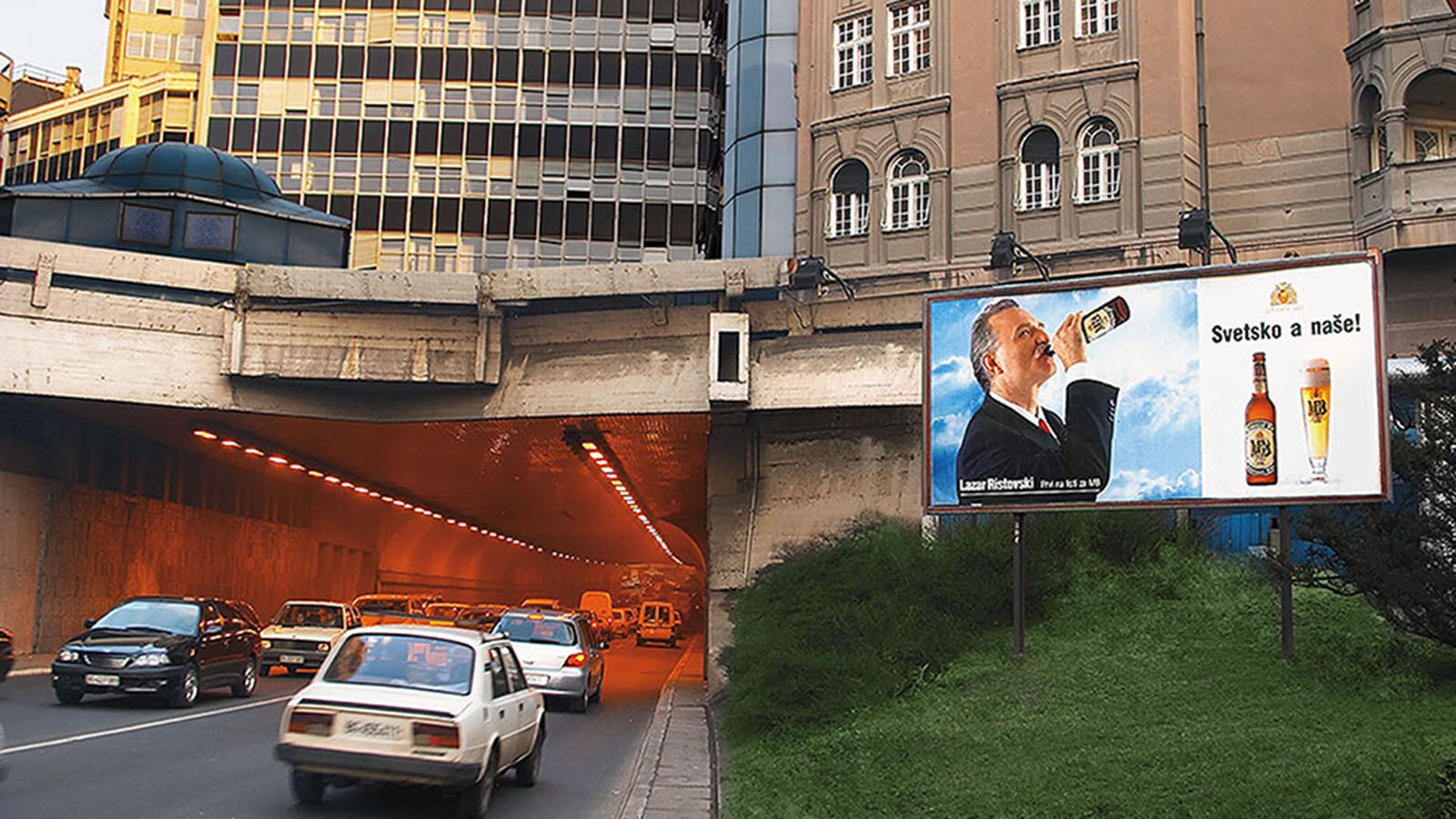
Alma Quattro’s archive photo
It would be an understatement to say that wine producers were not content.
Press clippings remain as the testimony of the question posed by the tobacco industry representatives: “How come that Serbia, the second country in Europe by the number of smokers, will have one of the most rigorous tobacco advertising laws”?
We entered the year of 2006 fearing how this “sanction” would affect investors willing to enter the market, while Alma Quattro was wondering which industry would take over the space on the network left by alcoholic beverage and tobacco industries.
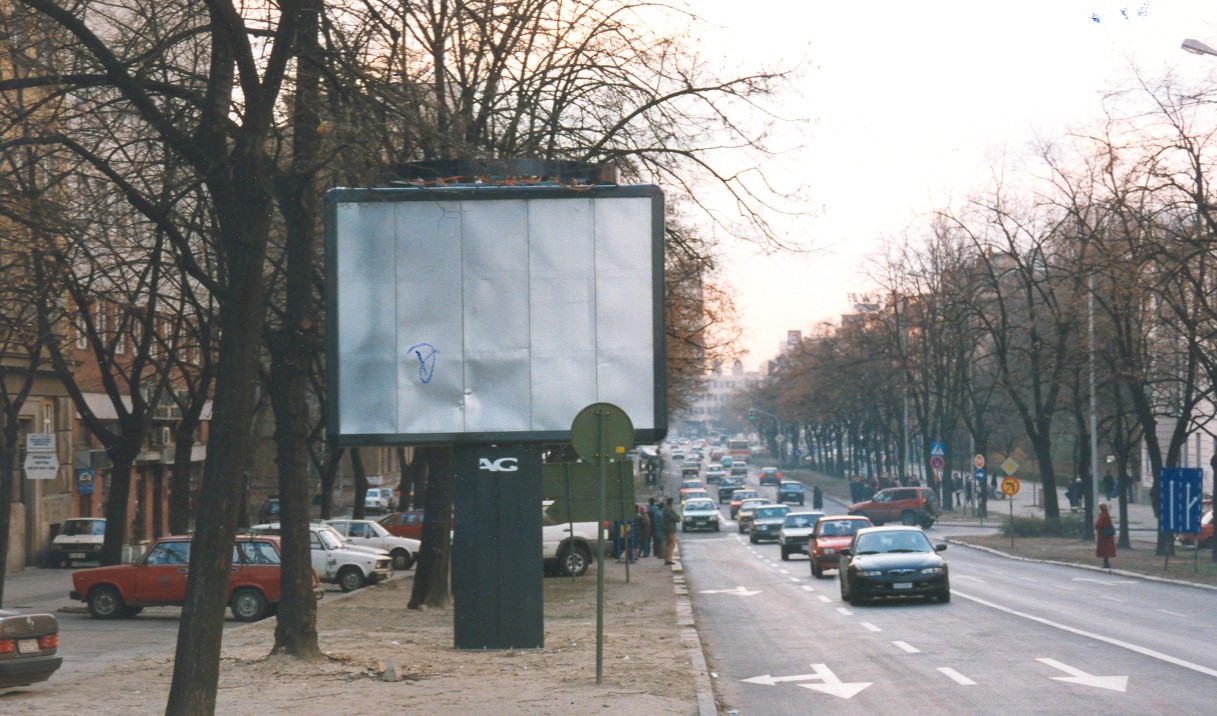
Alma Quattro’s archive photo
Soon we got the answer, but you will find out more about it in the continuation of the story...
Would you like to find out more? Continue reading...

